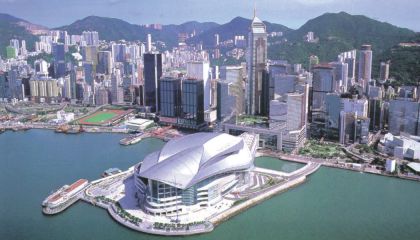
(The Third Comprehensive Transport Study : Final Report Published in 1999)
1.1 In the past 10 years (1988-98), Hong Kong's population has increased from 5.7 million to 6.8 million and GDP per capita has increased by 20% in real terms. This socio-economic growth, together with the rapid expansion of Hong Kong's port and airport facilities and increase in cross boundary traffic, have placed tremendous demands on transport infrastructure. Despite this, transport systems of Hong Kong have coped remarkably well with such demands. The majority of the population enjoy high levels of mobility and traffic speeds in most areas are at acceptable levels.
1.2 This success has been achieved through improving transport infrastructure, expanding and improving public transport, and managing road use. These principles, coupled with proper land-use planning, have formed the foundation of Hong Kong's transport policy and have been applied in response to changing opportunities and constraints. The First and Second Comprehensive Transport Studies, completed in 1976 and 1989 respectively, have formed the backbone of Hong Kong's transport infrastructure and policy development.
1.3 However, Hong Kong is a dynamic city, with continuous changes in economic growth and development, technology, public demands and aspirations. Population is forecast to continue growing at a fast pace and cross boundary activity is also expected to increase. These developments will continue to place further pressure on Hong Kong's transport infrastructure. If mobility is to be maintained, these demands need to be accommodated in some way. However, new infrastructure is becoming increasingly expensive and difficult to construct in Hong Kong's unique geographic situation.
1.4 Recent years have seen greater public awareness and concern over the deteriorating environmental conditions, which have accompanied the growth over the past decade. Although transport is only one of the contributing factors of environmental pollution, there is an increasing need for transport policy and planning to better reflect this concern.
1.5 As a result, the Third Comprehensive Transport Study (CTS-3) was commissioned in August 1997, with the objective of formulating a transport development framework that would contribute to more sustainable development in Hong Kong. In the transport context, this objective requires the balancing of a system that maintains and improves mobility with the adverse impacts this can have on the environment, and allows continued economic and social development. By emphasising the use of public transport, in particular railway, enhancing the integration of different transport modes, and making use of new technologies, a framework has been developed that provides mobility in a sustainable development context.

Providing mobility in a sustainable development context
1.6 As with previous CTS studies, CTS-3 has developed transport policies together with a set of infrastructure requirements and associated programmes for implementation. In addition, CTS-3 has recommended to develop a review system to ensure that the need, timing, scope and priorities of the relevant highway projects are re-assessed before implementation in light of the latest development.
Note: The information of the report was valid at the time when it was published. It might not remain so as at the date when this webpage was reviewed / revised. Please refer to the first page of the report for its publication date.